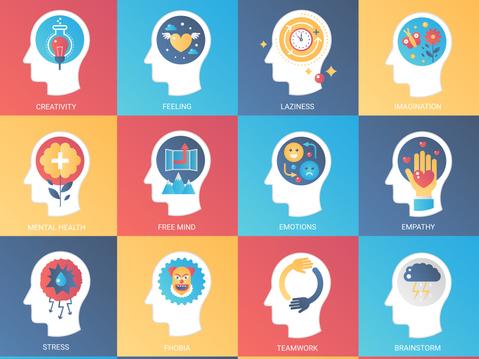Emotions and learning are inseparable. Emotions can both enhance and interfere with learning depending on which ones are driving or colouring the experience. Emotions can also be contagious, with strong positive or negative emotional states infecting others in the learning environment. Whether in a face-to-face or online environment, the emotional states of learners – and teachers – can influence one another. When educators understand the role that emotions play in learning and teaching, and how individual and shared emotional states can influence the dynamic of the learning environment and experience, they can design more effective learning experiences.
In this third article in our series covering the seven principles in the Higher Education Learning Framework, we look at emotions and learning in detail.
- Principle 1: Learning as becoming: what do students become as a result of their HE experience?
- Principle 2: Contextual learning: linking learning to the real world
- Principle 4: Interactive learning: more than teamwork makes the dream work
Emotions play a role in how and why students learn
Educators and students need to acknowledge the integral role that emotions have in learning. Emotions are an embodied response to a stimulus (whether real or perceived, external or internal) and are experienced along a continuum from positive to negative. In the learning environment, emotions can play a powerful role in supporting or undermining learning and teaching. Emotions are inherently linked to and influence cognitive skills such as attention, memory, executive function, decision-making, critical thinking, problem-solving and regulation, all of which play a key role in learning.
Positive learning emotions include interest, curiosity, wonder, passion, creativity, engagement and joy. These activate the reward system of the brain, make the experience desirable, and aid in focus and attention. Positive emotional states can enable students to broaden their perspective, see alternatives, persist through challenges and respond effectively to criticism and failure.
Positive emotions and the learning states they promote reciprocally influence the learner’s motivation. Motivation can be considered the drive and energy behind learning. Students can be motivated by both their internal goals for learning (mastery goals) or external factors such as grade recognition (performance goals). Mastery goals are often driven by personal interest, curiosity, relevance and effective learning regulation processes. Students who demonstrate mastery of goal orientation have been shown to have a more productive disposition towards learning, which results in more sustained experiences of learning success.
On the other end of the spectrum, negative emotional states such as anxiety, stress, sadness, disinterest, disengagement, worry and fear can impede learning processes and the motivation to learn, and stifle the development of effective learning dispositions. If a learner perceives a threat, their attention will be drawn to this, interfering with their ability to learn. In a learning environment, threats might be in the form of failure, being unprepared or feeling disconnected from other learners or the teacher. Unproductive negative emotions can lead to low motivation or disengagement, which can negatively impact a student’s learning experience and present challenging environments and dynamics for educators to navigate during class.
However, negative emotions such as confusion can also be a powerful learning tool.
How can we implement emotions and learning in higher education?
- Be aware of individual and group emotional states. These can be indicated by tone, non-verbal cues and language used to describe learning. Use this information to shape instructional practices, incorporating multiple and varied activities that engage emotional states and provide opportunities for dialogue. Pose open-ended questions that present alternative perspectives or possibilities to foster curiosity, interest and engagement, and encourage dialogue and debate. Interactive tasks allow students to be more actively engaged in the learning experience. These could include structured small group or breakout room discussions, short quizzes or practical tasks that apply ideas in context.
- Encourage self-reflection and metacognition through structured activities and assessments that connect new knowledge and skills, pose questions and prompt introspection.
- Promote an enjoyable and supportive learning culture in the course. Learn with and from your students, demonstrate value for their contributions and encourage their voice in and about the course.
- Provide opportunities for students to develop and practise strategies that foster emotional and learning regulation. Discuss with students the importance of confusion, curiosity, creative thinking, taking risks and exploring new possibilities and ideas in their learning, and learning from errors and failure. Increase the use of formative feedback to foster dialogue about learning and to provide opportunities for students to clarify misunderstandings.
- Give students a sense of agency and control over their learning. Support them to build effective self-regulated learning skills and provide multiple ways through which they can demonstrate their understanding, for example through submitting assessment tasks in different formats.
- Promote and foster a sense of belonging within the course. Model and provide opportunities for students to establish positive relationships and connection. Ways to create familiarity and trust include structured cooperative learning activities, online or face-to-face drop-in sessions immediately before or after class, online introductory discussion boards, and opportunities for incidental conversation.
Use emotions to inform learning experiences
No longer should higher education focus on learning as a purely cognitive process; emotions are an integral and valuable part of learning, and can be leveraged to promote engagement, motivation and student success. Recognising the role of emotions in learning can result in learning and teaching experiences that are enhanced and engaging.
Annemaree Carroll is head of the Science of Learning Research Centre Learning Lab; Stephanie MacMahon is programme director of the Learning Lab; Jason M. Lodge and Alexandra Osika lead the Learning Lab’s work in higher education. The Science of Learning Research Centre Learning Lab at the School of Education at the University of Queensland brings together multidisciplinary researchers and interprofessional partners with the aim of transforming learning across the lifespan.
If you would like advice and insight from academics and university staff delivered directly to your inbox each week, sign up for the Campus newsletter.




comment1
(No subject)